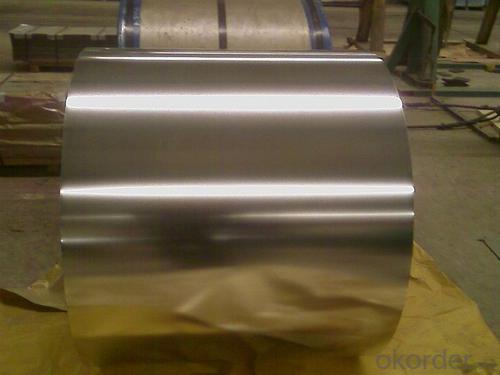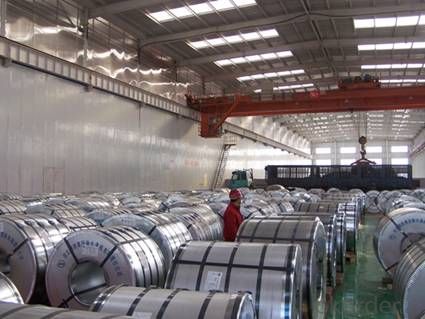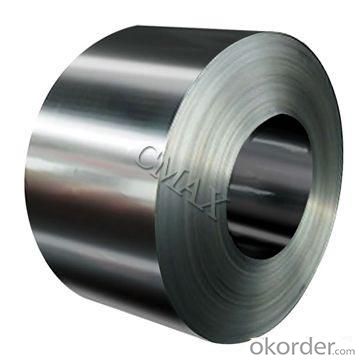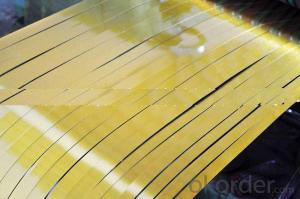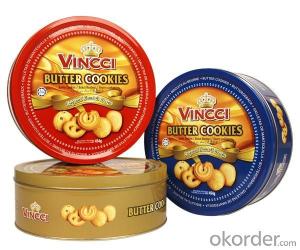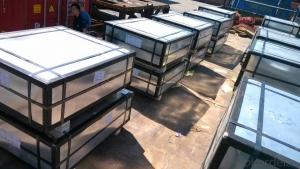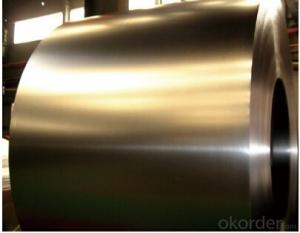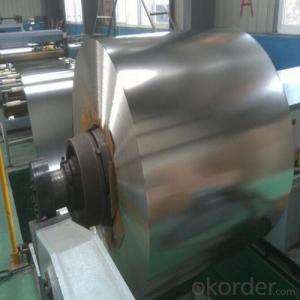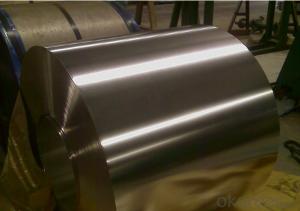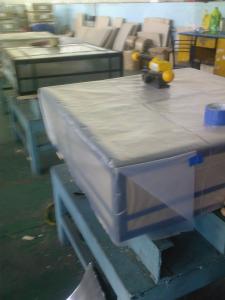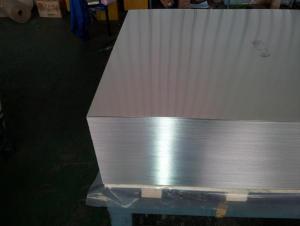MR/SPCC, Electrical Tinplate for Industrial Usage
- Loading Port:
- China main port
- Payment Terms:
- TT or LC
- Min Order Qty:
- 20 m.t.
- Supply Capability:
- 50000 m.t./month
OKorder Service Pledge
OKorder Financial Service
You Might Also Like
Specification
1.Tinplate production Process
cold rolling mill---degreasing production line---tension leveler---batch annealing furnaces/continuous annealing line---tin coating line---cutting line---stock area
2. Specification
standard: GB/T2520
Material: MR /SPCC
Thickness available: 0.16-0.50MM
Width available: 600~1050MM
Temper grade: T1 – DR8
Tin coating: ordinary 1.1g/1.1g~8.4g/8.4g/m2
Package: sea worthy export package.
Applications: Tinplate for chemicals & paint cans, industrial cans, food cans
3. Our factory photo:
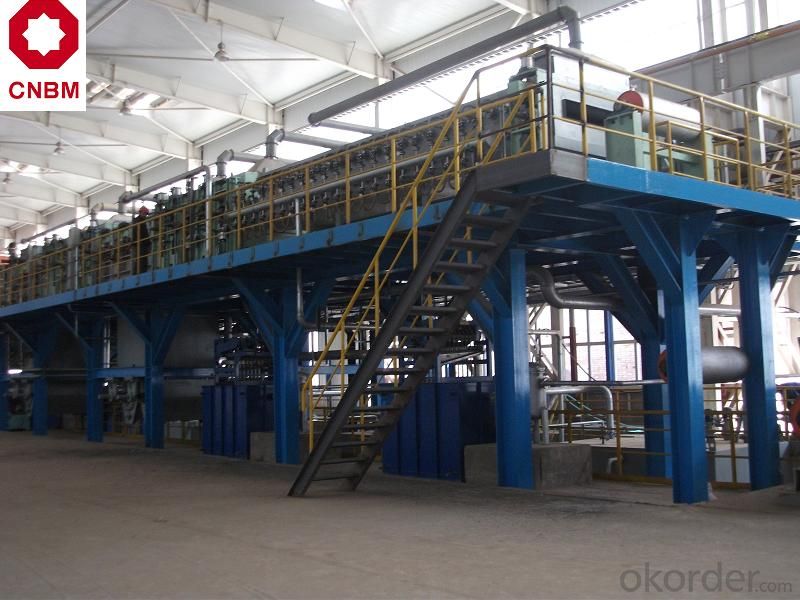
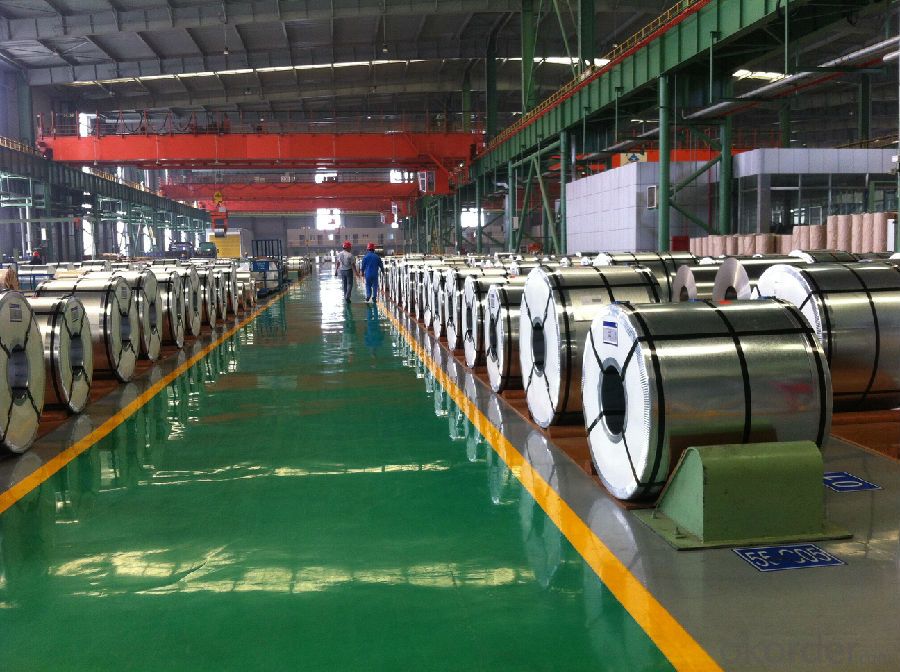
4. FAQ
a. What’s the price difference between SPCC & MR?
Our MR is about usd 15~20/mt higher than SPCC; b. What’s the difference between SPCC & MR
They have difference element content, MR is better than SPCC in anti-rust and deep drawing.
Steel | C | Si | Mn | P | S | Cu | Others |
MR | ≤0.09 | ≤0.03 | ≤0.35 | ≤0.02 | ≤0.025 | ≤0.1 | ≤0.35 |
SPCC | ≤0.12 | ≤0.5 | ≤0.035 | ≤0.025 |
c. What production standards you accept?
We could accept production standards upon our customer request, such as JISG 3303, DIN EN10202, GB/T2520 etc. Our tinplate could meet these standards.
d. If we want to place order, is there any requirement about the booking time?
We need to purchase raw material in advance. Around date 20 per month our production plan will be finalized. So it’s better if customer could place order before date 20 per month, otherwise the delivery time will delay one month.
- Q: Can tinplate be used for food packaging?
- Yes, tinplate can be used for food packaging. It is a common material choice for cans and containers used in the food industry due to its durability, resistance to corrosion, and ability to maintain the freshness and quality of the packaged food.
- Q: Can tinplate packaging be used for kitchen utensils?
- Yes, tinplate packaging can be used for kitchen utensils. Tinplate is a durable and food-safe material that can be easily shaped into various utensils like cans, containers, or other kitchen tools. It provides a protective barrier against rust and corrosion, making it suitable for kitchen use.
- Q: What are the main manufacturers of tinplate?
- The main manufacturers of tinplate include companies like ArcelorMittal, Tata Steel, Thyssenkrupp, Nippon Steel Corporation, and JFE Steel Corporation.
- Q: What are the common forms of corrosion that affect tinplate?
- Tinplate commonly experiences three forms of corrosion: uniform corrosion, pitting corrosion, and tin whisker growth. Uniform corrosion occurs evenly across the surface, leading to a thinning of the tin coating. Pitting corrosion, on the other hand, creates localized holes or pits, compromising the integrity of the tinplate. Lastly, tin whisker growth involves the formation of tiny, crystalline structures that can lead to short-circuits or other electrical issues.
- Q: What are the different types of tinplate finishes?
- There are several different types of tinplate finishes, including bright finish, stone finish, matte finish, and lacquered finish.
- Q: How does tinplate impact the overall product safety?
- Tinplate is known for its excellent barrier properties, durability, and resistance to corrosion, making it a popular choice for packaging food and beverages. Its impact on overall product safety is significant as it helps to prevent contamination, preserve product freshness, and extend shelf life. Tinplate acts as a protective barrier between the product and external factors such as light, air, moisture, and bacteria, ensuring that the contents remain safe and uncontaminated. Additionally, tinplate is non-toxic, making it a safe material for packaging edible goods. Overall, tinplate positively contributes to product safety by providing a reliable and secure packaging solution.
- Q: What are the recommended soldering techniques for tinplate?
- The recommended soldering techniques for tinplate include pre-tinning the surface, using a low-temperature solder, ensuring a clean and smooth joint, and avoiding excessive heat to prevent damage to the tin coating.
- Q: How does the coating affect the properties of tinplate?
- The coating on tinplate affects its properties by providing protection against corrosion, enhancing its durability, and improving its resistance to external factors such as moisture and chemicals. Additionally, the coating can also provide a decorative finish and enhance the appearance of the tinplate.
- Q: Can you tell me how to deal with the recycling of tinplate?
- General tinplate packaging waste, as long as the rust is not serious, can be converted into hardware products, to achieve the best use of materials. The consumption of tinplate in our country is relatively large (600 thousand tons / year), and 125 tons of tin packing waste can be recovered 1 tons of tin.
- Q: Can tinplate packaging be used for home decor products?
- Yes, tinplate packaging can be used for home decor products. Tinplate is a versatile material that can be easily molded into various shapes and sizes. It provides durability, visual appeal, and can be customized to suit different home decor styles. Additionally, tinplate packaging offers excellent protection for fragile home decor items, making it a suitable choice for packaging and displaying such products.
Send your message to us
MR/SPCC, Electrical Tinplate for Industrial Usage
- Loading Port:
- China main port
- Payment Terms:
- TT or LC
- Min Order Qty:
- 20 m.t.
- Supply Capability:
- 50000 m.t./month
OKorder Service Pledge
OKorder Financial Service
Similar products
Hot products
Hot Searches
Related keywords



